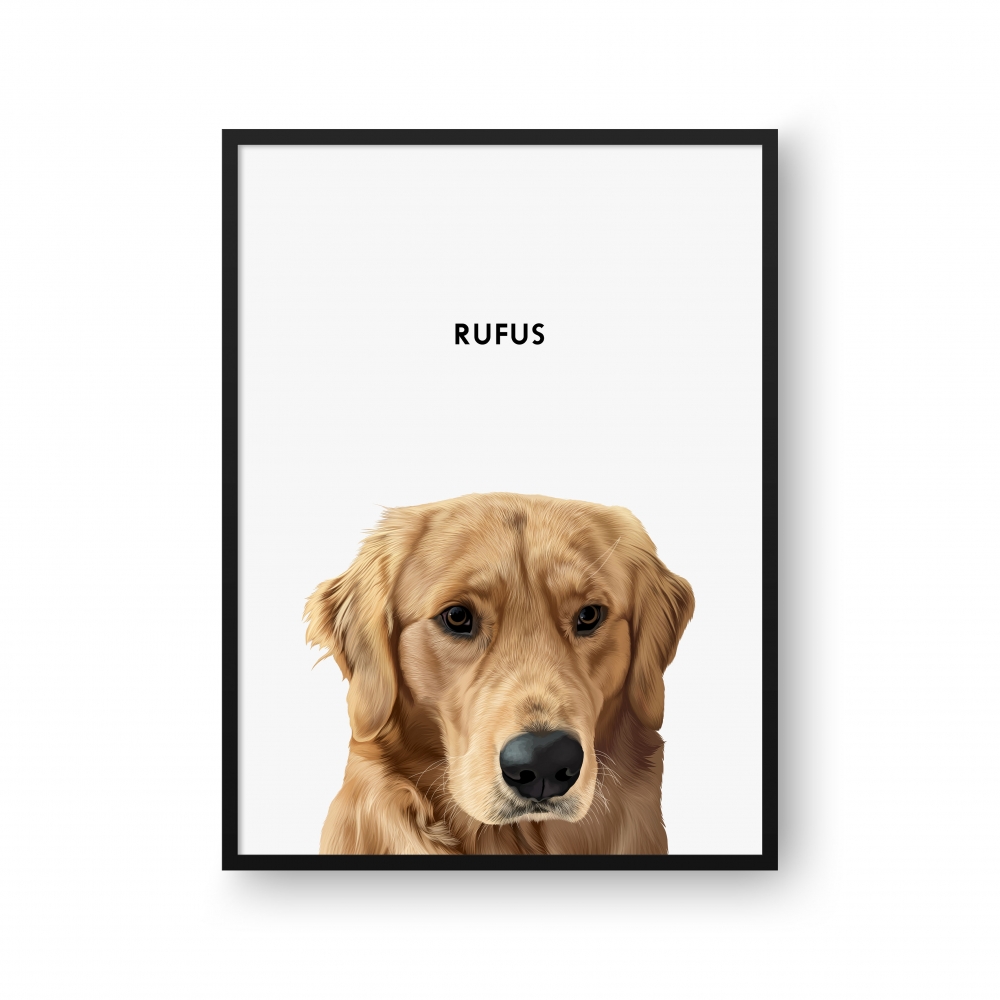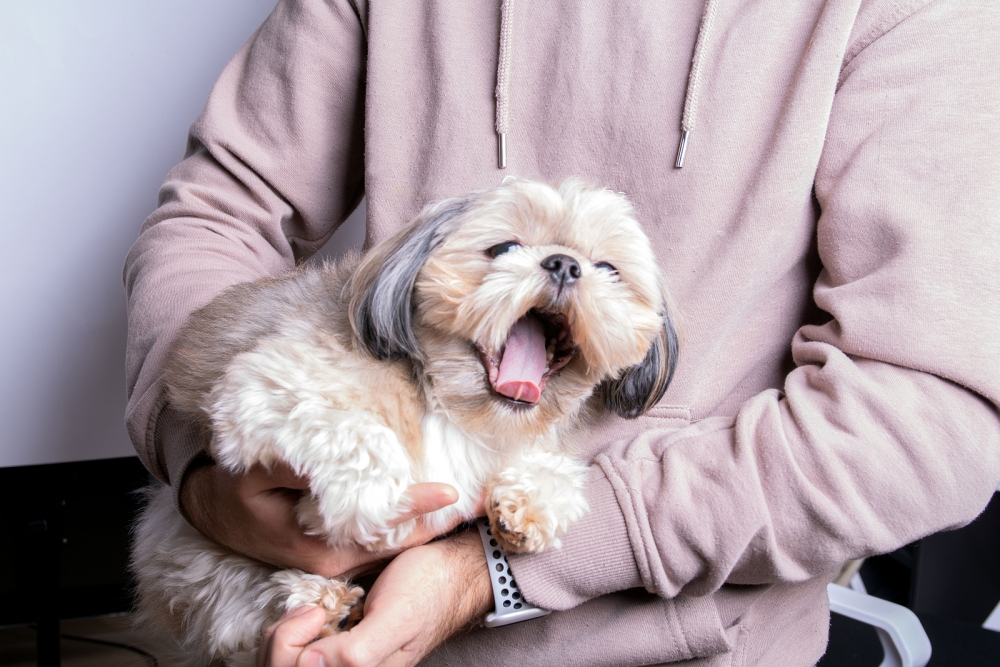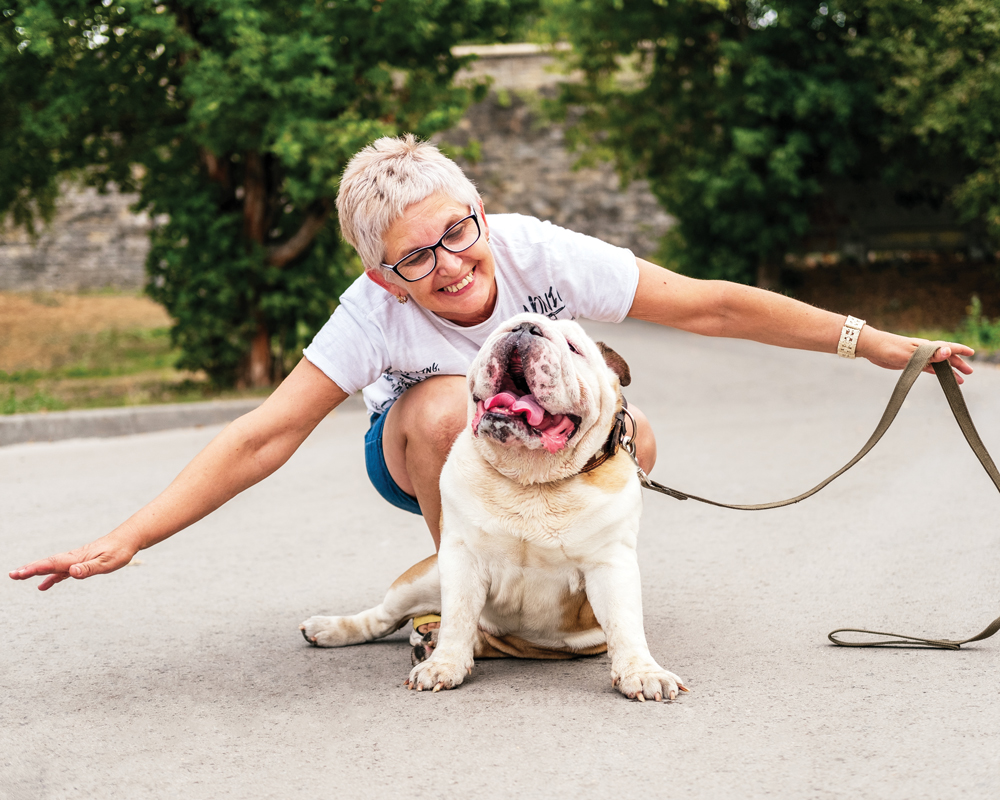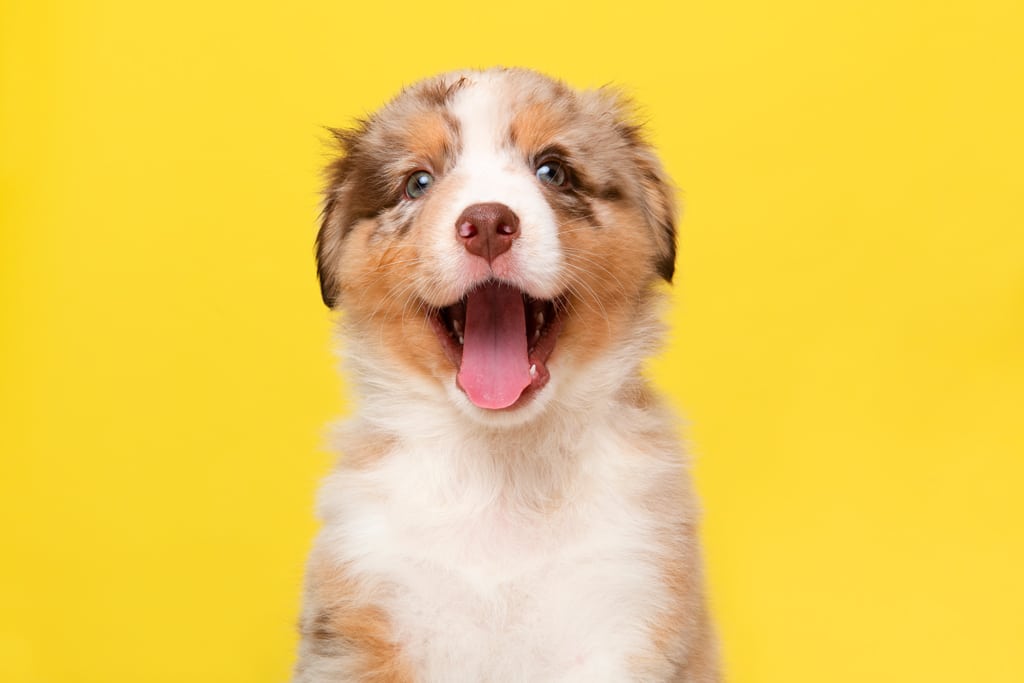- Dog CareDog LifeCommunity
- Photo Contest
Photo Contest- Giveaways
The Allure of Modern Pet Portraits in Celebrating Beloved Animals
In partnerhsip with Crown amd Paw
It should come as no surprise that pets hold a special place in the lives of their owners, becoming more than just animals; they're cherished companions that bring immeasurable joy and comfort.
To that end, a study revealed that 40% of pet-owning participants spent 12 hours or more daily with their furry friends. With so much time spent together, it only makes sense how pets and their owners grow considerably close, often from when the pup or kitten is introduced to their new home.
This close bond shows a pet's profound emotional influence, drawing out feelings of love, joy, and even tranquility. These intense relationships contribute to our well-being, enhancing the human-animal connection on many levels. This strong emotional bond opens the door to the captivating world of modern pet portraits, where we celebrate our beloved animals in all their unique antics and splendor.
Pet Portraits Can Help Immortalize the Special Bond Between Pet and Owner
The history of pet portraits is as old as the art of photography itself. Since the camera's inception, people have been capturing their beloved pets through the lens. The earliest known photograph of a dog, titled "Poodle with Bow, on Table," dates back to the 1850s.
This antique daguerreotype of a white Poodle is a testament to the enduring connection between humans and their furry companions, surviving the years and fetching over $8,000 at an auction in 2009. However, capturing these beloved animals with their wagging tails and antsy paws required the evolution of photography techniques.
Modern pet portraits are a contemporary manifestation of this deep bond. These artworks aim to capture a pet's unique personality and essence, celebrating their individuality in vibrant and artistic ways. Artists employ diverse styles, colours, and techniques to bring out the best in each animal, ensuring that every brush stroke or pixel on the screen reflects their spirit.
Different artistic styles used in modern pet portraits include:
- Realistic portraits: These lifelike renditions capture intricate details and textures, showcasing the pet's every feature with stunning accuracy.
- Pop art: This style employs vibrant colours and bold patterns to create a playful and eye-catching representation of the pet.
- Impressionistic: Using bold brushstrokes and dynamic colour combinations, this style emphasizes mood and emotion over precise realism.
- Cartoon or caricature: These portraits highlight exaggerated features and expressions, adding a touch of whimsy and humour.
- Minimalist: These pet portraits refine the pet's essence using clean lines and simple forms, often focusing on a unique feature or characteristic.
The Delight of Receiving a Pet Portrait as a Gift
Pet owners worldwide understand that their furry companions are more than just pets—they're cherished family members. This strong bond goes beyond companionship, as pet ownership is linked to improved human health. A staggering 87% of pet owners have personally experienced this human-animal connection's mental and/or physical health benefits, underscoring the remarkable "pet-effect" on our well-being.
Modern pet portraits, offered by the original pet portrait brand Crown & Paw, embrace this profound emotional connection. A customized pet portrait from Crown & Paw isn't just a piece of art; it's a heartfelt tribute that captures the essence of a beloved pet. When received as a gift, the joy is immeasurable.
During his travels, Crown & Paw's founder, Adam Reed, was inspired by the allure of renowned European art galleries. This passion project became a mission: making personalized pet gifts accessible and delightful. Giving a pet portrait as a gift is an artful way to celebrate the human-animal bond and mark significant occasions.
Consider gifting a pet portrait on occasions such as:
- Christmas: A cherished keepsake under the tree captures the festive spirit with a touch of furry love.
- Birthday: Celebrate a friend's or family member's special day with a unique and memorable pet portrait.
- Pet adoption anniversary: Commemorate the day a pet found its forever home with a heartfelt tribute.
- Baby shower: Perfect for a pet-loving parent-to-be, symbolizing the transition from "fur parent" to "human parent." To make it extra special, make the gift from the pet companion to their human mom.
- High school graduation: Mark the milestone with a fun and meaningful token of the pet's role in their journey. Get creative by having a fun portrait made of your pet donning a cap and gown—your graduate will love it.
- Surprise "you're getting a puppy" gift: Create anticipation and excitement for a new furry family member. Hint: If you want to pull this one off, try to get a photo of your adopted pet from the ethical breeder or previous owner in advance so that you have time to create the special gift.
- Just because: Because the joy of a pet portrait is boundless, any day can become special with this heartwarming gift.
Capturing Forever: The Enduring Appeal of Modern Pet Portraits
The human-animal bond holds undeniable health benefits, and modern pet portraits are a timeless expression of this special connection. Crown & Paw, as the original pet portrait brand, understands the emotional significance that these customized artworks carry.
Each stroke of the brush or click of the camera captures the essence and personality of a beloved pet. It's more than a picture; it's a testament to the joy, love, and shared moments that define the human-animal relationship. The delight of receiving a pet portrait as a gift is unparalleled, drawing out emotions that resonate deeply.
Whether it's a festive occasion, a milestone, or a day filled with love, modern pet portraits add an artistic touch that immortalizes the shared special bond. It's a celebration of companionship that stands the test of time, a visual reminder of pets' warmth and devotion to our lives.
As you reflect on the undeniable joy that your beloved pet brings, consider commissioning a modern pet portrait of your own. Embrace the opportunity to encapsulate your furry friend's unique spirit and create a precious keepsake that celebrates your unwavering bond.
Let the captivating allure of modern pet portraits speak to your heart as you embark on a journey to honor your one-of-a-kind relationship.
Why Does My Dog Yawn When I Pet Him?
At Modern Dog magazine, nothing gives us more joy than sharing our doggie passion with you. Our puppers give us so much joy, and we’re fanatical about how to repay the favour.
Today, we will discuss why dogs yawn when you pet them and other fun doggie information about yawning.
We’ve made it easy for you if you’re looking for fast answers! Scroll down past the picture below and the following two paragraphs, and we’ve summarized what we’ve learned on our doggie journey. Want to know even more? We’ve provided a full, detailed article for you. 🙂
The world of dog yawns is intriguing, especially for fans of our furry friends like us. The line between nap time signals and secret codes is vague in this realm! Prepare to unravel the coded messages behind your furry friend’s yawn, which might scream boredom to the untrained eye.
Yawning can be a tale of joy, anticipation, stress, and even subtle dog diplomacy in the canine universe! So buckle up and dive into the mystery of dog yawns, where each yawn speaks volumes about your pet’s feelings.
1. Why does my dog yawn when I pet him? The answer depends on the situation and how your dog is feeling. Sometimes, they could be excited that you’re showing them affection, or your furry friend might not be in the mood.
2. Why do dogs yawn? Dogs yawn for various reasons, including stress, confusion, indifference or you!
3. Why do dogs yawn when you cuddle them? Yawning while cuddling can indicate stress or affection, depending on the dog.
4. Do dogs yawn when they are happy? Sort of! Changes in emotion, like boredom to exited, can make dogs yawn.
5. Do dogs yawn when tired? Yawning can signify tiredness in dogs, just like in humans.
6. Can dogs fake yawn? While it’s difficult to determine if dogs can intentionally fake yawns, they do yawn to communicate their emotions.
7. Are yawns contagious to dogs? Yes, yawns can be contagious to dogs, and they may yawn in response to seeing their owners or other dogs yawn.
Why Do Dogs Yawn?
Photo Yaraslava Melchanka/Bigstock.com
The yawn of a dog—a simple yet curious act that can mean different things depending on the context and circumstances.
Picture this: you reach for the leash, and your pup yawns. Your pup’s gesture is not a sign of boredom; quite the contrary! It’s their way of saying, “The squirrels are waiting; let’s hustle!”
At the park, a friendly yawn towards a fellow fur-mate is like a gentlemanly nod, ensuring the fur stays unruffled in their social circles.
The plot thickens with the stress yawn— cue the dramatic music— as the vacuum (a.k.a the household monster) roars to life.
Sometimes, a yawn is simply a cue for a snuggle or nap, showcasing your pooch’s different moods, one yawn at a time, making them all the more endearing.
The next time your pup yawns, take a moment to observe the context and surroundings. You might decipher their secret message or get in some quality cuddling time.
Dog Yawns and Body Language
Body language of dogs is a topic we could spend hours writing about (and will!), so we won’t get too detailed in this article, but yawning alone may make it challenging to identify how your pup is feeling. When paired with doggie body language, it becomes easier to understand what your dog is trying to communicate.
Is your pup’s tail wagging? Ears perked? Looking relaxed and comfy? All this will come into play when determining how a yawn should be perceived.
And as with any dog behaviour, it’s crucial to consider the context and their usual behaviour patterns.
In summary, yawns are essential for dogs to communicate their feelings. Whether signalling playtime, showing affection, or calming nerves, a dog’s yawn speaks volumes about how they feel in that moment.
Excessive Yawning
We will cover this topic in a future article. However, you should know that excessive yawning may cause concern if your furry friend has begun yawning more than usual; finding out why is essential.
Yawning can be a sign of stress in dogs. Is there a specific situation that’s causing it? If you need more clarification, booking a vet appointment for a checkup can alleviate your worries.
Dog Yawning While Training
You can teach your furry friend actions and tricks through repetition. Still, it’s vital to remember that learning something new can be challenging for pups.
Yawning in dogs is linked to stress; just like us, going through a learning adventure can be stressful.
If your pup is yawning while you’re going through training, maybe it’s time to take a break… or better yet, change the tone and break out the treats? 🙂
Calming signals and stress yawns
A stress yawn is one of the many calming signals dogs use to communicate with each other and humans. Calming signals are behaviours that signal a dog is feeling nervous or under pressure.
Like any other body language, dogs can pick up on these cues between themselves— similar to how humans read facial expressions in conversations. It’s fascinating how much we have in common with our furry friends.
As dog owners, it’s essential to understand these signals and provide a safe environment for our pups. If you notice your pup yawning excessively or using other calming signals, it may be time to assess the situation and change their routine.
Why do dogs yawn when you cuddle them?
Pupper could be stressed about the situation or happy; it depends on the pup!
Occasionally, you may notice your furry companion breaking into a wide, perhaps not-so-obvious yawn as you snuggle up with them.
Yawning can be one of Rover’s quirky ways of coping with the joy or slight nervousness of the whole ordeal – a sign of pacifying the over-stimulation or diffusing the high-intensity cuddle situation. Think of it as a coping mechanism.
- Dogs have this knack for employing yawns to communicate, regulate emotions, or cool their busy minds. They might just be trying to tell you, “I love this, but I’m a tad overwhelmed!”
- So, the next time your dog yawns while you cuddle them, it could be a sign they’re enjoying the hug but may also need a little break.
- Dogs may yawn when excited or anticipating something enjoyable, like going for a walk or being fed.
- Yawning can also be calming, indicating your dog wants a more relaxed environment.
- Stressful situations, such as new environments or vet visits, can cause dogs to yawn.
- Dogs may yawn when confused or experiencing conflicting emotions, especially during learning sessions.
- Yawning can be contagious; dogs may yawn in response to their owners’ yawning.
- Dogs may also yawn when happy and content, especially during cuddle sessions with their owners.
Do dogs yawn when they are happy?
Sort of!
Dogs often yawn when moving from boredom to alertness. A happy pup may yawn when anticipating something exciting, like a walk or playtime with their owners. When your dog is comfortable and relaxed, they may also yawn to show contentment.
Do dogs yawn when tired?
They sure do!
Like humans, dogs may also yawn when tired as it can help regulate oxygen levels in the body and increase blood flow, which can provide a burst of energy. So the next time you see your dog yawning after a long play session, don’t be surprised – it just means they’re ready for relaxation!
However, excessive yawning or lethargy could also indicate an underlying health issue, so it’s always important to monitor your dogs’ behaviour and consult a veterinarian if you have any concerns.
Can dogs fake yawn?
We’re not sure!
Doggie scientists don’t think so – but they have concluded that dogs can identify and ignore fake yawns from their owners or strangers.
Are yawns contagious to dogs?
YES, but only for really cool people.
A scientific study investigated the phenomenon, confirming the contagiousness of yawning from humans to our furry friends.
One doggie study suggests that our puppers only yawn in response to us and not strangers, and this may indicate that while dogs show empathy, it may be more specific to their human families.
This behaviour hints at a deeper emotional connection between dogs and their owners, which is, needless to say, quite endearing. It turns the simple yawn into a small, sleepy sign of affection.
Moving onto a quirky observation, each reciprocated yawn is like a little hat tip between you and your furry companion, a quiet acknowledgment of your bond.
Although dogs showing empathy might raise eyebrows higher than a surprised poodle, the studies suggest there’s more to a dog’s yawn than meets the eye.
If you find yourself in a yawning duet with your canine buddy, take a moment to appreciate the interaction. It’s just one of the many understated ways our dogs nudge into our lives, making the mundane amusing—the yawn – a small but warm gesture in the quiet language of companionship.
Conclusion
Dogs yawn for various reasons, from communicating emotions to regulating stress levels. Understanding your dog’s body language and surroundings is essential when deciphering their message.
Whether they’re yawning out of happiness or need a break from the cuddles, each yawn is a cute and quirky way our furry companions communicate with us.
So the next time your dog yawns, you can share a yawn back and enjoy the special moment between two best friends.
Your Dog is Boosting Your Brain Performance
Having a dog isn’t just good for your physical health—a new study says they can play an important role in the brain.
Pets already bring plenty to our lives—unconditional love and companionship, for starters—but a new study suggests that they also have a positive effect on our
brain health, particularly when it comes to delaying cognitive decline.“It’s cognitively demanding to take care of a pet,” says Dr. Henry Mahncke, a neuroscientist who is also the CEO of Posit Science, a company providing brain training software and services.
Cognitive function is “everything the brain does,” explains Mahncke. That includes memory, learning, attention span, the speed in which we can do tasks, and more.
“As we get older, these [brain functions] all tend to kind of slowly get worse,” he says. “Remember, the brain is an organ inside of your body—just like the heart beating inside of your chest,” and subject to the same strains
of aging.A just-released observational survey conducted by the University of Michigan Medical Center and University of Florida over a six-year window found positive effects in older adults who owned pets compared with those who didn’t. The study particularly analyzed data pertaining to adults with an average age of 65—over half of whom were pet owners (53 percent).
When it comes to pets playing a role in brain health, Mahncke says our furry friends affect both sides of the complex organ. “The first is what you might call the cognitive side of the brain. And the second is what you might call the emotional side of the brain. And those are both very, very important.”
Of the 1,369 adults that were part of the observational Health and Retirement study, 32 percent were classified as “long-term pet owners,’’ meaning they’ve had their companions for five years or more. Participants were given cognitive tests that included word recall, numeric counting, and more to determine how they compared against others in the same age group without pets. Results showed that the cognitive composite score was 1.2 points higher for pet owners over a six-year period compared to non-pet owners.
Photo fabiocamandona2/bigstock.comAnother study released in Oct. 2022, using data from the Alabama Brain Study on Risk for Dementia, examined a similar link between cognitive and brain health with pet ownership. Of the 95 participants aged 22 to 74, 56 of whom are pet owners and 39 who were not, it was found that pet ownership was related to higher cognitive levels (specifically, better memory, and processing speed, among other things). It was also found in this separate study that owning a pet could potentially reduce aging of the brain by up to 15 years.
What’s particularly fascinating about the University of Michigan Medical Center and University of Florida study initially referenced, Mahncke tells Modern Dog, is what actually happens to our brains when we have to take care of a dog, cat, or other pet.
“There’s what we do with our pet and there’s what we do for our pet,” Mahncke explains.
For example, taking your dog for a daily walk is one of the most common activities that people with dogs undertake.
“If you have a dog, you’re out in the world more often, right? All of those things are really cognitively stimulating for the brain,” says Mahncke, noting that this type of physical activity is recommended for older adults with or without pets.
"A separate study found that owning a pet could potentially reduce aging of the brain by up to 15 years. "
“We know there’s an important role for physical activity and maintaining brain health…but a pet is extra motivation,” he adds. Of course, there are also tasks that pertain to taking care of our companions–primarily feeding or bathing.
“If you think about the cognitive demands involved: I have to remember to go to the store and I have to get my pet food and feed them multiple times a day,” says Mahncke, who is the owner of two cats himself.
There’s a direct correlation, he further explains, between having those chores and responsibilities–which create additional cognitive activity for our human brains.
“If we have more cognitive demands in everyday life, we’re going to have healthier brains [because] our brains are more active,” he adds.
The emotional side plays an equally important role when it comes to affecting brain chemistry, too.
“Think about the love that we get from a pet, and the love that we give to a pet; this releases a neurochemical called oxytocin that’s involved in pair bonding,” he says.
photo Verelly/bigstock.comOxytocin is also related to what he calls “brain plasticity,” which is the concept that the brain changes and reorganizes itself throughout one’s lifespan. Healthy brains are more easily adaptable to change, which is partially why learning attention spans wane and learning new skills is more difficult for older adults.
Beyond improving cognitive function, pets can also have a positive effect on reducing stress in adults.
“When we interact with our pets, it reduces our cortisol levels,” Mahncke details. Cortisol is a stress hormone, and can have a profound effect on our mood. Too much stress, however, can lead to an increase in cortisol production—and there’s no shortage of studies linking stress to heart disease, cancer and other conditions.
“We know that stress is terrible for the brain—a short period of stress is okay, but chronic stress is terrible for brain health,” he says. “Stress reduces learning and memory, for example, causing neural cells to become disconnected to each other.”
“Reducing stress is going to contribute to brain health,” he also says. “Pets end up having these deep impacts on literally the wiring of our brain.”
In a similar vein, robotic pets have also been proven to successfully reduce stress as well as improve the moods of those who are already suffering with dementia per a study by Florida Atlantic University released in October 2021—creating a whole new category of pet therapy. Researchers employed the use of a robotic cat to measure cognition with the Mini Mental State Examination (MMSE), which found that the “pet” helped to boost mood overall in more than half of the participants.′
The full study about pets and cognitive decline by the University of Michigan Medical Center and University of Florida was presented at the American Academy of Neurology’s 74th Annual Meeting in April 2022.
This article originally appeared in the award-winning Modern Dog magazine. Subscribe today!
Dogify Your Inbox
Sign up for the FREE Modern Dog Magazine newsletter & get the best of Modern Dog delivered to your inbox.
"*" indicates required fields
By clicking the arrow, you agree to our web Terms of Use and Privacy & Cookie Policy. Easy unsubscribe links are provided in every email.




